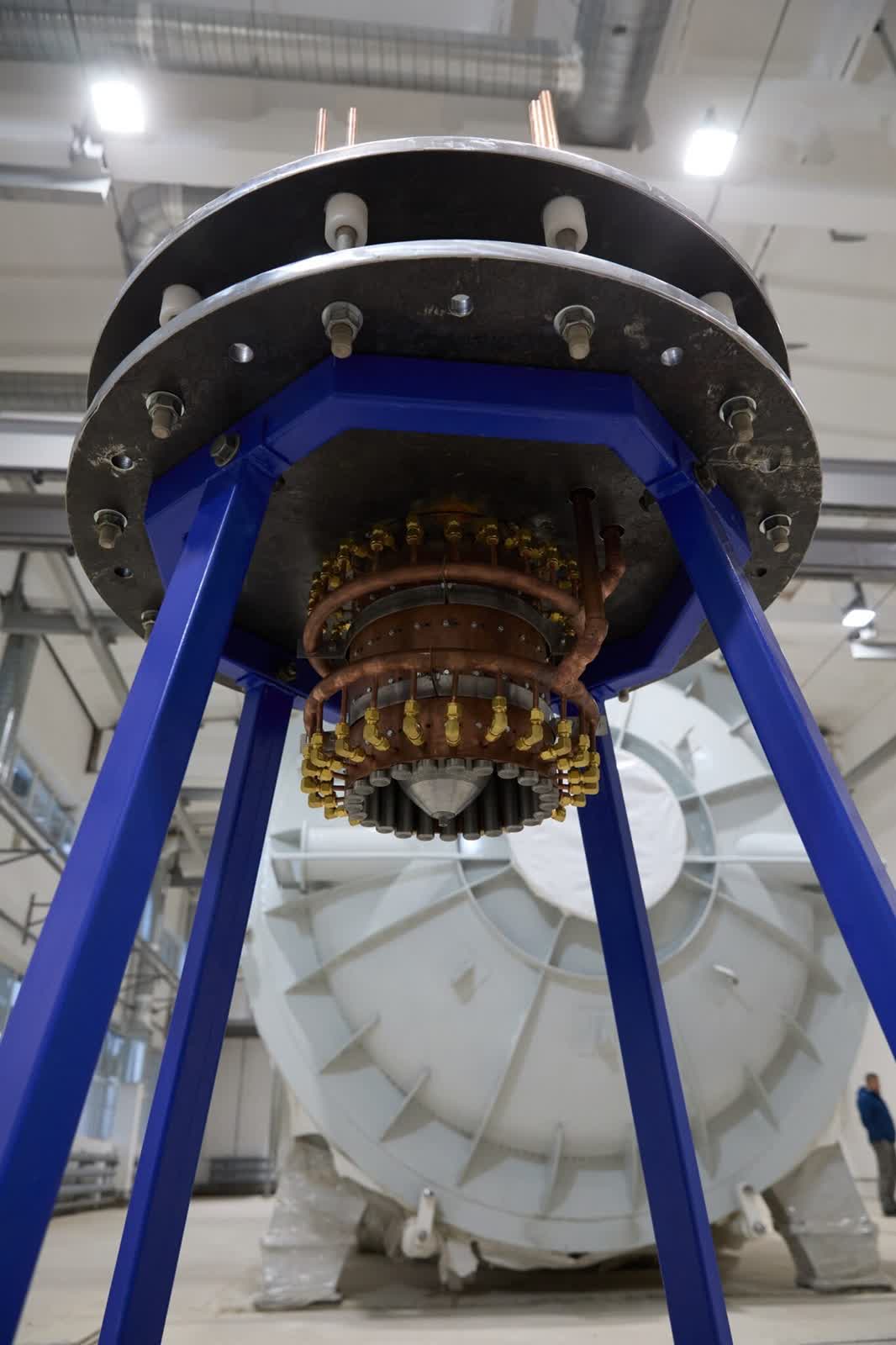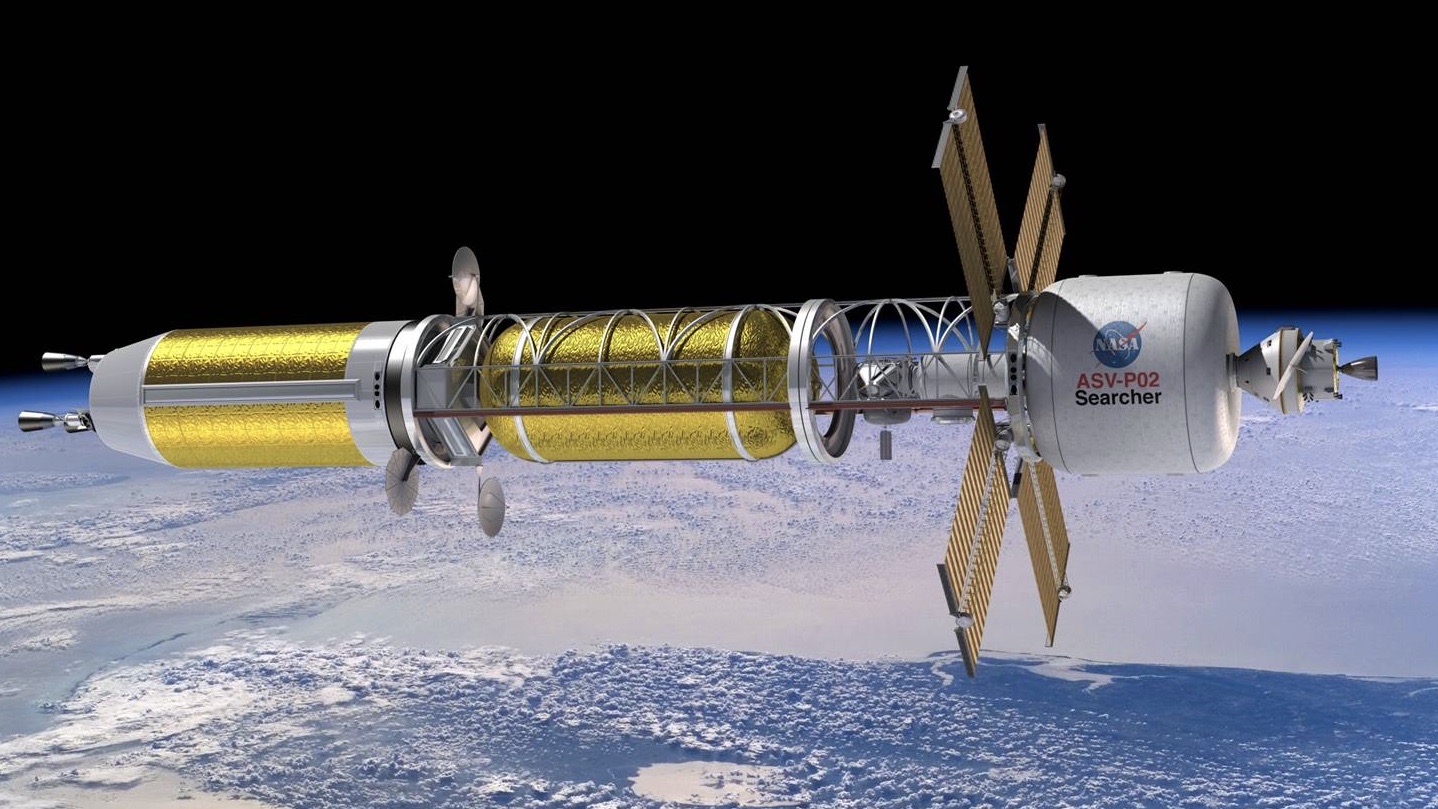Something to look forward to: Scientists have created a laboratory prototype of a plasma electric rocket engine that could revolutionize space travel. Based on a magnetic plasma accelerator, this propulsion system promises to significantly reduce interplanetary travel time, potentially enabling trips to Mars in just one to two months.

Russia's State Atomic Energy Corporation, Rosatom, recently developed a new spacecraft engine with impressive specifications. It far surpasses the capabilities of traditional chemical rocket engines, capable of generating at least 6 N of thrust and a specific impulse of at least 100 km/s.
"Currently, a flight to Mars using conventional engines can take almost a year one way, which is dangerous for astronauts due to cosmic radiation and exposure to radiation," Alexey Voronov, First Deputy Director General for Science at the Rosatom Research Institute, explained. "Using plasma engines can shorten the mission to 30-60 days, meaning it will be possible to send an astronaut to Mars and back."
The engine operates on a fundamentally different principle than traditional rockets. Junior researcher Egor Biriulin explained that a plasma rocket engine is an electric propulsion system with two electrodes. When charged particles move between them and a high voltage is applied, an electric current generates a magnetic field. This field propels the particles out of the engine, giving the plasma a directed motion that produces thrust.
This approach has a power output of about 300 kW, allowing for unprecedented speeds. While traditional power units have a maximum matter flow velocity of about 4.5 km/s due to fuel combustion conditions, the new plasma engine accelerates charged particles – electrons and protons – to a speed of 100 km/s (62 miles/s).
Engineers will test the technology using a large-scale experimental stand assembled in Troitsk. The stand's key equipment is a vacuum chamber measuring four meters in diameter and 14 meters in length. Rosatom will equip the test unit with systems for high-performance vacuum pumping and heat removal, allowing scientists to simulate the conditions of deep space.

One notable advantage of this new engine design is its efficiency. Biriulin noted that the plasma does not need to be intensely heated, which means that the parts and components of the engine do not experience temperature overloads. Additionally, the engine converts nearly all the generated electrical energy into motion.
The spacecraft's initial launch into orbit will still rely on traditional chemical rockets. However, the plasma engine takes over once it reaches its designated orbit. Future spacefaring could incorporate the technology into space tugs to transport cargo between planets.
Before getting too excited, it's important to note that the research comes with several caveats come with the research. For one, the engine is still in the prototype stage, and significant development work remains before Rosatom can use it in crewed space missions. Also, while the group claims that its estimates of the engine's capabilities are "justified" through more than 2400 hours of testing, this may be optimistic since Rosatom has not tested the engine in space-like conditions for long durations.
Additionally, the potential use of space tugs for cargo transport between planets is speculative at this stage. It's important to remember that this is an early-stage technology, and the dramatic reduction in travel time to Mars should be viewed as a potential long-term goal rather than an imminent reality.
The development of this plasma engine is part of a broader initiative by Rosatom to advance space exploration technologies. The company is also involved in developing new nuclear power plants for various space applications, onboard systems, and automatic control and navigation systems for spacecraft.
Russian scientists develop plasma engine prototype promising Mars trips in 30-60 days
